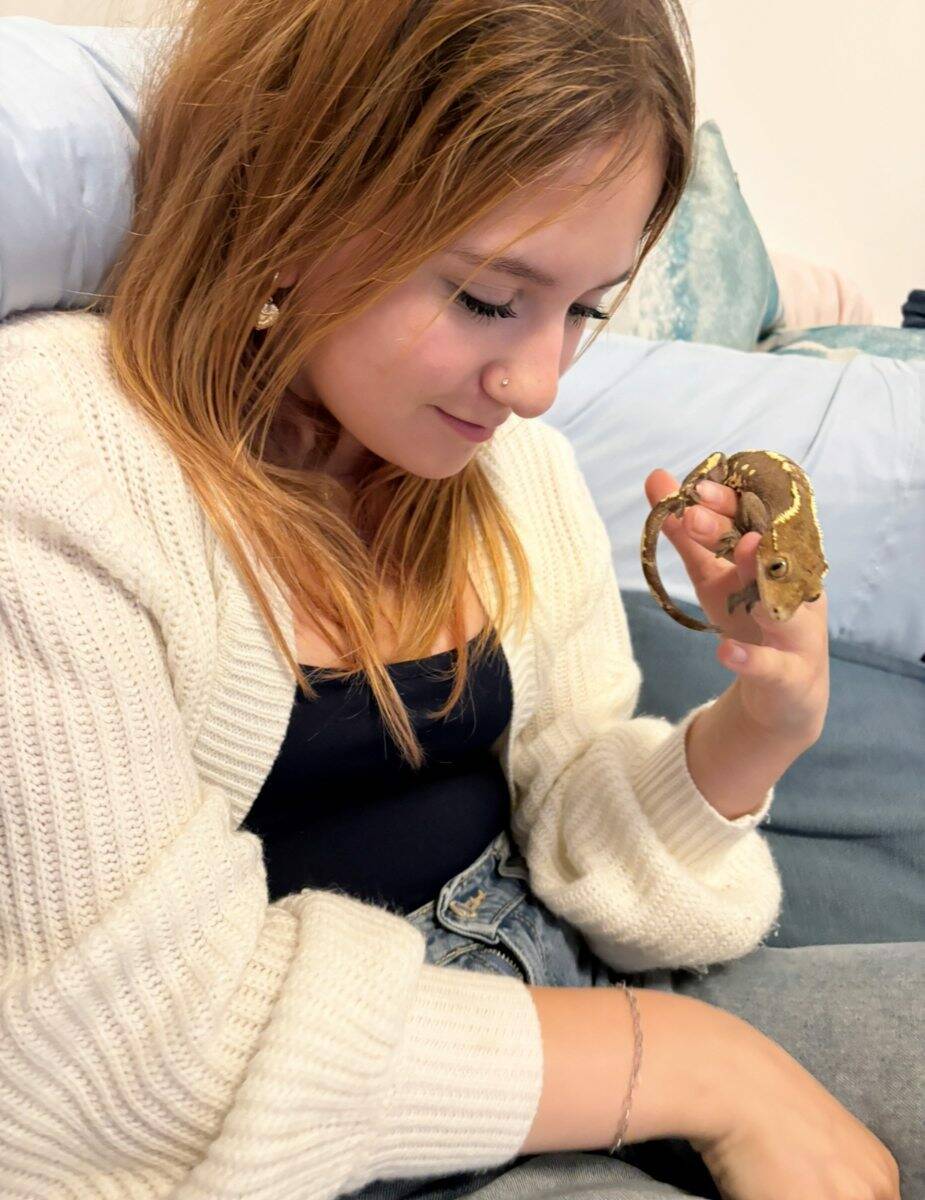Anything but a turtle
Advertisement
I had someone approach me at an event and say: “You’re the pet guy. My daughter wants a turtle. Where should we start?”
The hardest thing to say in response is: “Maybe a turtle isn’t the right choice.”
There are many pets we see on TV shows or in movies, or remember fondly from our youth, that we think we might like to have. But when it comes to actually providing them with the proper housing and care, it’s a completely different story.

Supplied photo
Crested geckos are playful, interactive pets and very easy to care for.
Turtles are probably the poster children of bad pet decisions. Back in the day, baby turtles were available in department stores for a few dollars, and you could buy little plastic trays for them with a plastic palm tree for a few dollars more.
However, the standard pet turtle is a red-eared slider” which can live over 30 years and grow to be larger than a dinner plate. Proper housing for them is a 50-gallon aquarium with good filtration, heating and a UVB basking lamp. That set-up can cost $500 to $1,000. Turtles themselves, if you can find one, now cost $50 to $100. Some kids may find a baby painted turtle and want to keep it, but they require the same habitat as a slider and should be hibernated, which is really hard to do properly. And turtles aren’t really “playful” pets, so many children tire of them quickly.
Getting a baby turtle without committing to its proper care is not fair to the animal. So, what are the alternatives?
Tortoises are occasionally available and, because they are land animals, they don’t require a watertight enclosure. Some people make table-top pens for smaller tortoises that stay under a foot in size, or large pens for the bigger ones. However, these animals live longer than turtles, still need the UVB, and eat a diet of fresh foods. Some people say having a tortoise improves their own diet because they have the fresh foods in the house ready to make into meals for both human and reptile.
Frogs are another cute pet, but they are very hard to care for, and creating their habitats is difficult as humidity is tough to maintain without creating mold. And again, they are not playful, more of an ornament.
So that brings us to the pet I ultimately recommended to the inquiring mother – a gecko. There are many types of gecko — leopard geckos were most popular for a long time, but they need live crickets or mealworms for food. They are playful and interactive, though, and easy to keep and clean, needing only a 10-gallon tank and some simple heat and light.

In the last 20 years, crested geckos have become the most popular variety by far. No special lighting or heating is needed, they don’t require live food, and a simple, vertical terrarium is all they need for housing. Provide lots of decorations and foliage to hide in, a little misting, and change their food daily. — that’s it. Their food is made by adding some water to a powder.
The more you handle crested geckos, the more fun they can be. They can learn who you are, and while they are quite capable of leaping a few feet, most are content to just hang and chill. We got her a couple of adult geckos and an enclosure, and they have become quite attached. Geckos can live 20 years, but as they are so fun and easy to keep, that usually isn’t an issue.
There are lots of options out there for pets, and a little research can make sure you have a match where person and pet both live long happy lives.

Jeff McFarlane
Pets Are People, Too
Jeff McFarlane is the owner of Thrive Pet Food Market. Contact him with your questions or ideas thrivepetfoodmarket@shaw.ca or visit www.thrivepetfoodmarket.com
Our newsroom depends on a growing audience of readers to power our journalism. If you are not a paid reader, please consider becoming a subscriber.
Our newsroom depends on its audience of readers to power our journalism. Thank you for your support.




